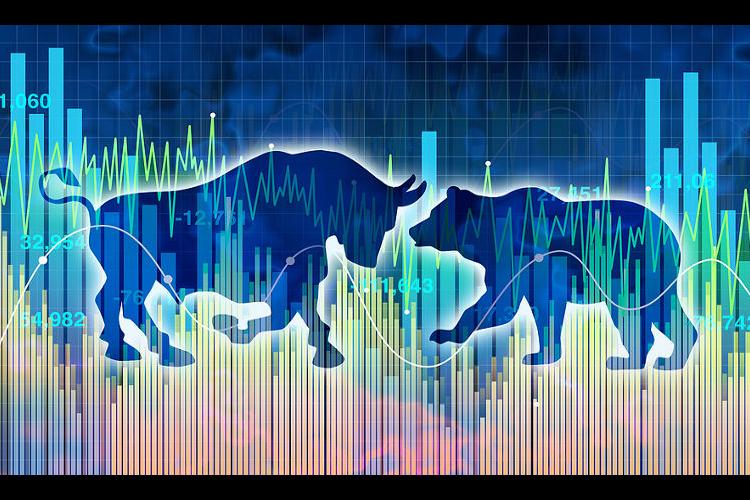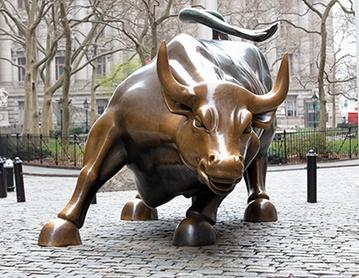Bull and Bear Market: the Symbology of Trading

Bulls and Bears in Trading
Every day in stock, bond, commodities and cryptocurrency markets we hear the words bear and bull, but what exactly do they represent?
Bullish Market
By Bullish Market, or "bull market" we mean a bullish phase of the markets resulting in higher prices.
Bulls in the world of trading represent those individuals who buy a stock, share or cryptocurrency hoping for a rise in price in order to generate profit (buy low - sell high).
The bull has become a true symbol of the world's financial markets.
An example of this is the bronze bull placed in New York near the Wall Street Stock Exchange and created by Sicilian sculptor Arturo Di Modica.
Bearish Market
For Bearish Market, or "market of the bears", we mean a bearish phase of the markets, with consequent decrease of the prices.
The bears, in the world of trading, represent those subjects that sell a Stock, an action or a cryptocurrency, hoping for a decrease of the prices for being able to generate profit (sell high - buy low).
With regard to the cryptocurrency market, there are a few years derivative instruments that allow investors to sell short, or sell without necessarily being in possession of that coin (eg futures and margin trading).
Since these instruments were born in recent times, they are not available for all existing cryptocurrencies, but only for the most important ones.
Consequently, it is not always possible to sell short, and in order to generate profits from short operations in a bearish context it is necessary to own that cryptocurrency, in order to sell it, and then buy it back at a lower market price.
Battle between Bulls and Bears
When we talk about battles between bears and bulls we mean an undecided market phase, in which bulls and bears try to prevail on each other without generating important market variations.
Supply and demand are balanced causing a laterality of prices for a certain period of time.
In these cases, an upward or downward breakage of specific price levels (called supports and resistances) will lead to the decree of the winning animal group.
Bull and Bear in Trading: Origin of Symbolism
The association between price changes and bears and bulls is often identified in the way the two animals conduct their attack:
- the bull attacks with its horns in a bottom-up movement, such as prices going up
- the bear on the other hand strikes with its claws in a top-down movement, such as the prices of a stock going down.
With regard to the bear, it may be just as useful to remember that sellers of bear skins historically bought the skins at given prices and thus made a profit when there was a drop in the value of the skins sold by hunters, as the difference between their buying and selling value, grew and with it their profit ("don't sell the skin of the bear before you kill it" is an Anglo-Saxon expression, which probably owes its origin to this system.
Oxen Park in Trading
By "bull pool", in trading jargon, we mean all those investors and savers who trade without sufficient knowledge of the underlying mechanisms of the financial markets.
Often "the oxen park" does not have a trading strategy, does not diversify its portfolio and does not have a money management strategy.
Those who operate in financial markets without the right knowledge of the sector, often find themselves making large and repetitive losses.
The classic bull park is the one who buys high and sells low.
ATTENTION
If you also belong to this category, I suggest you inform yourself very well before engaging in trading activities, even more so in crypto contexts, where market volatility could prove to be a lethal blow.
